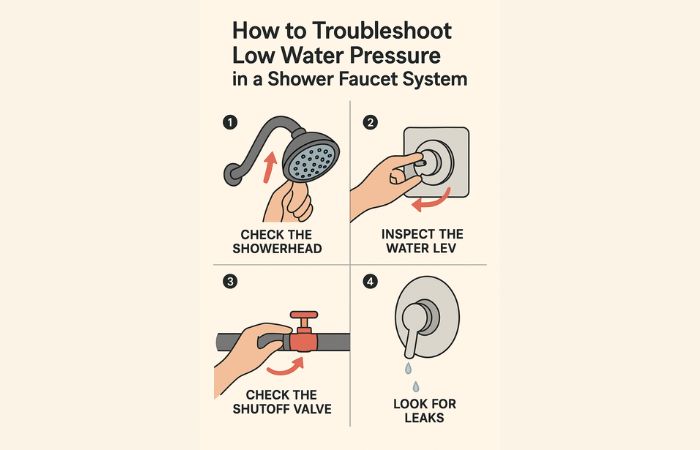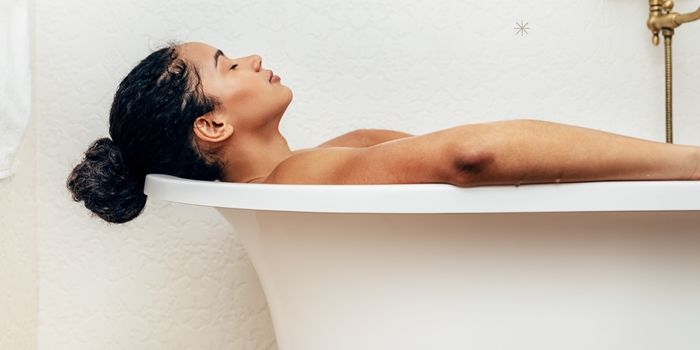Few things are more frustrating than stepping into your shower, ready for a warm, relaxing experience, only to be met with a weak trickle of water. Low water pressure in your shower faucet system can feel inconvenient and confusing, especially when you’re unsure what’s causing the issue. Fortunately, diagnosing and troubleshooting this problem doesn’t require being a plumbing expert. By following some straightforward steps, you can identify the culprit and get your system back to running at full power.
This guide will walk you through the potential reasons behind low water pressure in your shower and provide practical solutions to restore functionality. Whether you’re using a Wellfor shower system or other models, these solutions apply broadly and will help you regain that spa-like shower experience.
Common Causes of Low Water Pressure in a Shower Faucet System
Low water pressure in your shower faucet system can result from several issues. Here are the most common culprits:
1. Clogged Showerhead
Mineral deposits from hard water can accumulate in your showerhead’s small nozzles over time, restricting water flow.
2. Valve Issues
If your shower faucet’s valve is partially shut or faulty, it may block proper water pressure.
3. Water Supply Problems
Sometimes, the issue isn’t with your faucet system but originates from your water supply system. This could be a municipal water pressure problem or an issue with your private well system.
4. Leaks in Pipes
A leak in your plumbing pipes can cause water to escape and reduce pressure before it reaches the shower.
5. Pressure Balancing Problems
If someone uses water elsewhere in your home (e.g., flushing a toilet), your shower faucet system might experience fluctuating pressure.
6. Obstructions in Pipes
If debris, rust, or sediment builds up inside your pipes, it can restrict water flow and reduce pressure.
7. Shower Cartridge Problems
The cartridge inside your Wellfor shower system regulates water flow. A dirty or worn-out cartridge can restrict flow and result in lower pressure.
Step-by-Step Guide to Troubleshooting Low Water Pressure
Now that you know what could be causing the issue, it’s time to take action. Follow these steps to troubleshoot and potentially fix the problem.
1. Check If the Problem Exists Beyond the Shower Faucet System
Before tackling the shower-specific components, test other faucets in your home. If all faucets are experiencing low water pressure:
- For Municipal Water Supply: You might need to call your local water utility to confirm pressure levels.
- For Private Wells: Check your well pump and pressure tank to ensure they’re functioning correctly.
If the problem is isolated to the shower, proceed with the steps below.
2. Clean the Showerhead
A clogged showerhead is a common cause of reduced water pressure. Here’s how to clean it:
- Remove the Showerhead: Unscrew it from the shower arm using a wrench (protect the finish with a cloth).
- Inspect for Residue: Look for visible mineral deposits or blockages on the nozzles.
- Deep Clean the Showerhead:
- Submerge it in a bowl filled with white vinegar and warm water (50/50 mix) for a few hours.
- Gently scrub the nozzles with an old toothbrush.
- Reassemble and Test: Attach the showerhead and test the water pressure.
For Wellfor shower systems, this cleaning process ensures optimal performance without damaging delicate components.
3. Inspect the Shower Valve
The valve controls water flow to your shower faucet. Here’s what to do:
- Turn off the water to your shower.
- Remove the handle to access the valve.
- Look for signs of blockages, corrosion, or damage.
- If the valve appears faulty, you may need to replace it. Consult a professional plumber if you’re unsure.
4. Check for Leaks in Your Plumbing System
Leaks can waste water and lower pressure. Signs of a potential leak include:
- Higher-than-usual water bills
- Wet spots on walls, floors, or ceilings near pipes
- Constantly running water sounds
If you suspect a leak, hire a plumber to locate and repair it to restore proper pressure.
5. Address Pressure Regulation Issues
Sometimes, the issue lies in your home’s water pressure regulator. Too-low regulator settings can affect your shower’s performance. You can:
- Locate the regulator (usually near your water meter or well system).
- Adjust the screw to increase water pressure. Use a pressure gauge to ensure you don’t set it too high (ideal residential water pressure is around 50-70 PSI).
6. Replace the Shower Cartridge
A faulty cartridge can hinder water flow. For Wellfor shower systems, follow these steps:
- Turn off the water supply to your shower.
- Remove the handle and trim plate to access the cartridge.
- Carefully pull out the old cartridge and inspect for damage.
- Replace it with a new cartridge designed for your model.
7. Flush the Pipes
Obstructions in the pipes can impact water flow. To flush idle sediment:
- Remove the showerhead.
- Turn on the shower to allow water to flush through the open pipe for several minutes.
- Reattach the showerhead and test the pressure.
8. Upgrade Your Showerhead
If you’re still experiencing low water pressure, consider upgrading to a high-performance showerhead. Many Wellfor shower systems offer advanced models with optimized water flow even in homes with lower pressure levels.
Additional Tips to Enhance Your Shower Faucet System Performance
To maintain high water pressure and prolong the lifespan of your Wellfor shower system, try these tips:
- Install a water softener if you have hard water to reduce mineral buildup.
- Clean your showerhead regularly to prevent clogs.
- Inspect and replace plumbing parts, such as cartridges and valves, as part of routine maintenance.
- Monitor water supply systems, especially if you rely on a private well, to ensure there’s no underlying issue impacting performance.
When to Call in Professional Help
While many issues can be solved at home, there are instances when professional assistance is necessary. Consider hiring a plumber if:
- The problem persists despite following these steps.
- You suspect major plumbing issues, such as extensive leaks or broken pipes.
- You’re uncomfortable disassembling shower components.
Investing in professional help ensures your system is repaired correctly and efficiently.
Final Thoughts
Low water pressure in your shower faucet system can disrupt your daily routine, but fortunately, it’s often a fixable problem. Whether it’s a clogged showerhead, a worn cartridge, or an issue with your home’s water system, identifying the cause is the first step toward restoring strong, steady water flow. For optimized performance and reliability, the Wellfor shower system offers exceptional solutions built for modern households.
Take the time to troubleshoot and address these issues promptly so you can enjoy the refreshing, high-pressure shower you deserve. Share this guide with friends or family who might find it helpful, and keep your shower system in tip-top condition!




